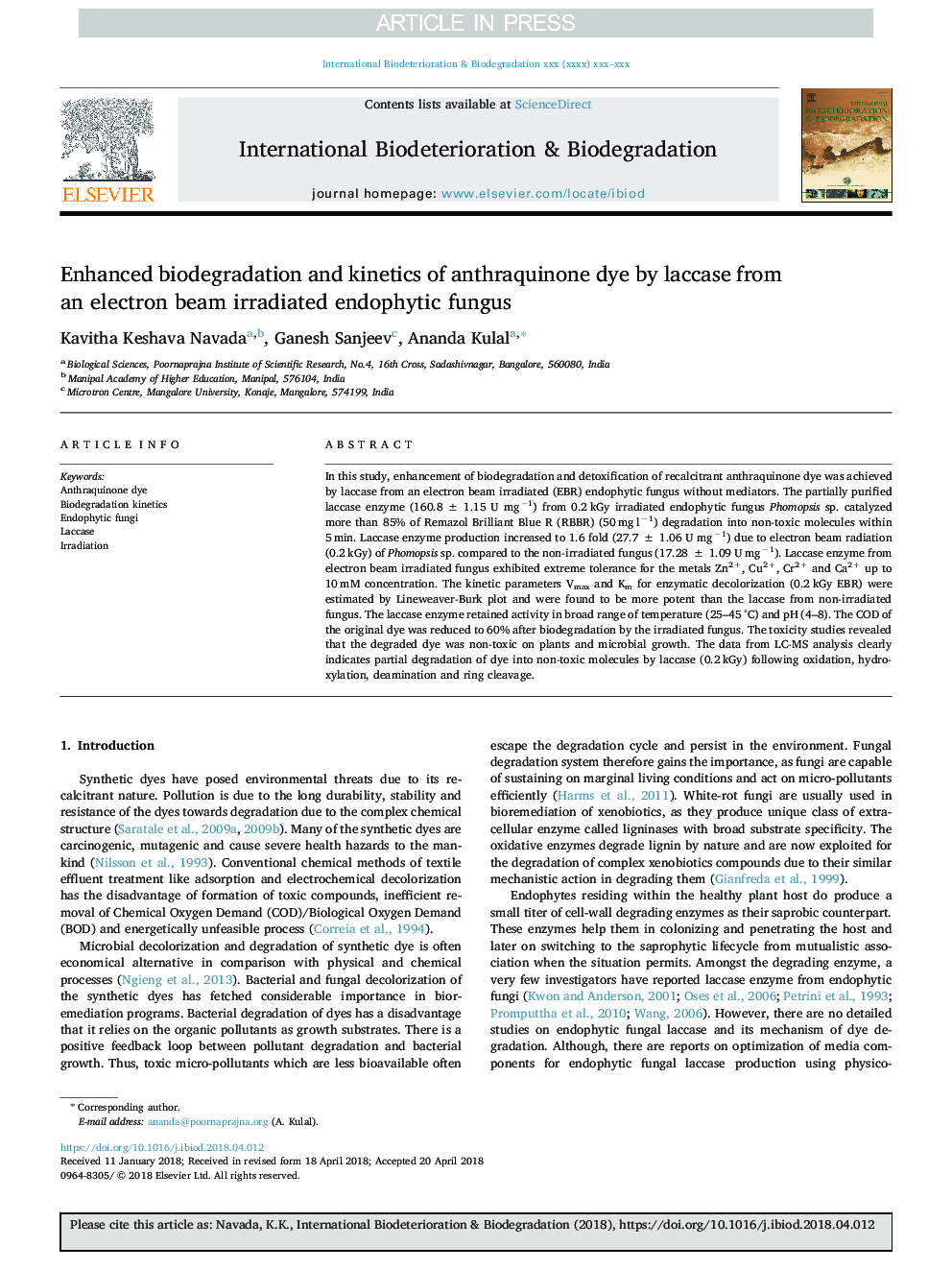| Article ID | Journal | Published Year | Pages | File Type |
|---|---|---|---|---|
| 8843773 | International Biodeterioration & Biodegradation | 2018 | 10 Pages |
Abstract
In this study, enhancement of biodegradation and detoxification of recalcitrant anthraquinone dye was achieved by laccase from an electron beam irradiated (EBR) endophytic fungus without mediators. The partially purified laccase enzyme (160.8â¯Â±â¯1.15 U mgâ1) from 0.2â¯kGy irradiated endophytic fungus Phomopsis sp. catalyzed more than 85% of Remazol Brilliant Blue R (RBBR) (50â¯mgâ¯lâ1) degradation into non-toxic molecules within 5â¯min. Laccase enzyme production increased to 1.6 fold (27.7â¯Â±â¯1.06 U mgâ1) due to electron beam radiation (0.2â¯kGy) of Phomopsis sp. compared to the non-irradiated fungus (17.28â¯Â±â¯1.09 U mgâ1). Laccase enzyme from electron beam irradiated fungus exhibited extreme tolerance for the metals Zn2+, Cu2+, Cr2+ and Ca2+ up to 10â¯mM concentration. The kinetic parameters Vmax and Km for enzymatic decolorization (0.2â¯kGy EBR) were estimated by Lineweaver-Burk plot and were found to be more potent than the laccase from non-irradiated fungus. The laccase enzyme retained activity in broad range of temperature (25-45â¯Â°C) and pH (4-8). The COD of the original dye was reduced to 60% after biodegradation by the irradiated fungus. The toxicity studies revealed that the degraded dye was non-toxic on plants and microbial growth. The data from LC-MS analysis clearly indicates partial degradation of dye into non-toxic molecules by laccase (0.2â¯kGy) following oxidation, hydroxylation, deamination and ring cleavage.
Related Topics
Life Sciences
Environmental Science
Environmental Science (General)
Authors
Kavitha Keshava Navada, Ganesh Sanjeev, Ananda Kulal,
